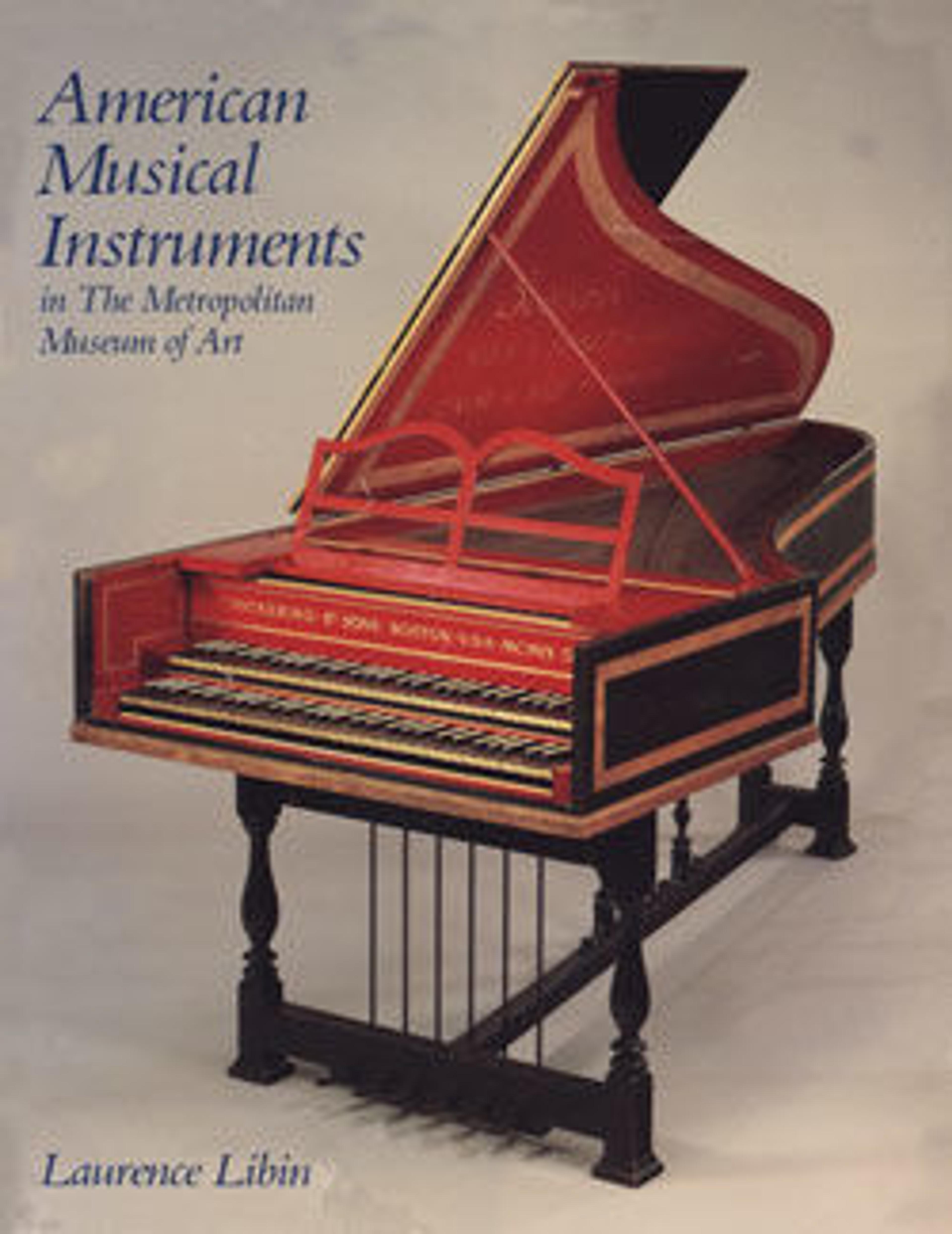Upright Piano and Reed Organ
This unusual instrument is both an upright piano and a reed organ. Both upright pianos and reed organs were popular in homes and this instrument captures the sounds of both. The upper body contains the soundboard and strings, along with the long stickers used in upright grand pianos. The lower body contains the pipes along with the bellows for the organ. There are five pedals that originally woudl have operated the dampers, provided for a bassoon stop in the bass, a mute sound, a drum, and a pedal that silenced the piano so that only the reed organ could be heard. There is also a curved pedal at the right for the right foot to pump the bellows for the reed organ.
Technical description:Vertical rectangular case of mahogany and mahogany veneer on 4 claw-ball feet with 2 turned and reed pillars (missing) supporting the keyboard, and 1 turned, painted pillar at either side of the case front above the keyboard; framed glass panels reveal the reed organ and piano mechanisms below and above the keyboard; the whole instrument can be removed from the back of the case; satinwood (?) veneer on nameboard, with inlaid oval ebony nameplate lacking an inscription; compass EE-c4 (69 keys), ivory naturals, ebony accidentals; 5 pedals beneath case, inoperable but apparently damper, bassoon (up to c1), mute (Cloth covered batten touching strings near nut), drum (all hammers striking simultaneously), silent (deactivating piano action by sliding hammer rail upwards); also a curved metal pedal at right side for pumping the bellows; English upright action with 71 cm stickers tripped by single escapement; leather-covered hammers pivoted in metal kapsels; extensions on hammer butts depress damper arms; top 13 notes quadruple-strung, rest triple, lowest 13 notes wound with steel over brass, then brass wire to g#. (L. Libin 12 Nov. 76)
Technical description:Vertical rectangular case of mahogany and mahogany veneer on 4 claw-ball feet with 2 turned and reed pillars (missing) supporting the keyboard, and 1 turned, painted pillar at either side of the case front above the keyboard; framed glass panels reveal the reed organ and piano mechanisms below and above the keyboard; the whole instrument can be removed from the back of the case; satinwood (?) veneer on nameboard, with inlaid oval ebony nameplate lacking an inscription; compass EE-c4 (69 keys), ivory naturals, ebony accidentals; 5 pedals beneath case, inoperable but apparently damper, bassoon (up to c1), mute (Cloth covered batten touching strings near nut), drum (all hammers striking simultaneously), silent (deactivating piano action by sliding hammer rail upwards); also a curved metal pedal at right side for pumping the bellows; English upright action with 71 cm stickers tripped by single escapement; leather-covered hammers pivoted in metal kapsels; extensions on hammer butts depress damper arms; top 13 notes quadruple-strung, rest triple, lowest 13 notes wound with steel over brass, then brass wire to g#. (L. Libin 12 Nov. 76)
Artwork Details
- Title: Upright Piano and Reed Organ
- Date: ca. 1835 (?)
- Geography: United States
- Culture: American
- Medium: Various materials
- Dimensions: Case length (perpendicular to keyboard) 57.3, Width (parallel to keyboard) 115.1 cm, Total height 212.0 cm
- Classification: Chordophone and Aerophone-struck piano/ free reed keyboard
- Credit Line: The Crosby Brown Collection of Musical Instruments, 1889
- Object Number: 89.4.2098
- Curatorial Department: Musical Instruments
More Artwork
Research Resources
The Met provides unparalleled resources for research and welcomes an international community of students and scholars. The Met's Open Access API is where creators and researchers can connect to the The Met collection. Open Access data and public domain images are available for unrestricted commercial and noncommercial use without permission or fee.
To request images under copyright and other restrictions, please use this Image Request form.
Feedback
We continue to research and examine historical and cultural context for objects in The Met collection. If you have comments or questions about this object record, please complete and submit this form. The Museum looks forward to receiving your comments.
